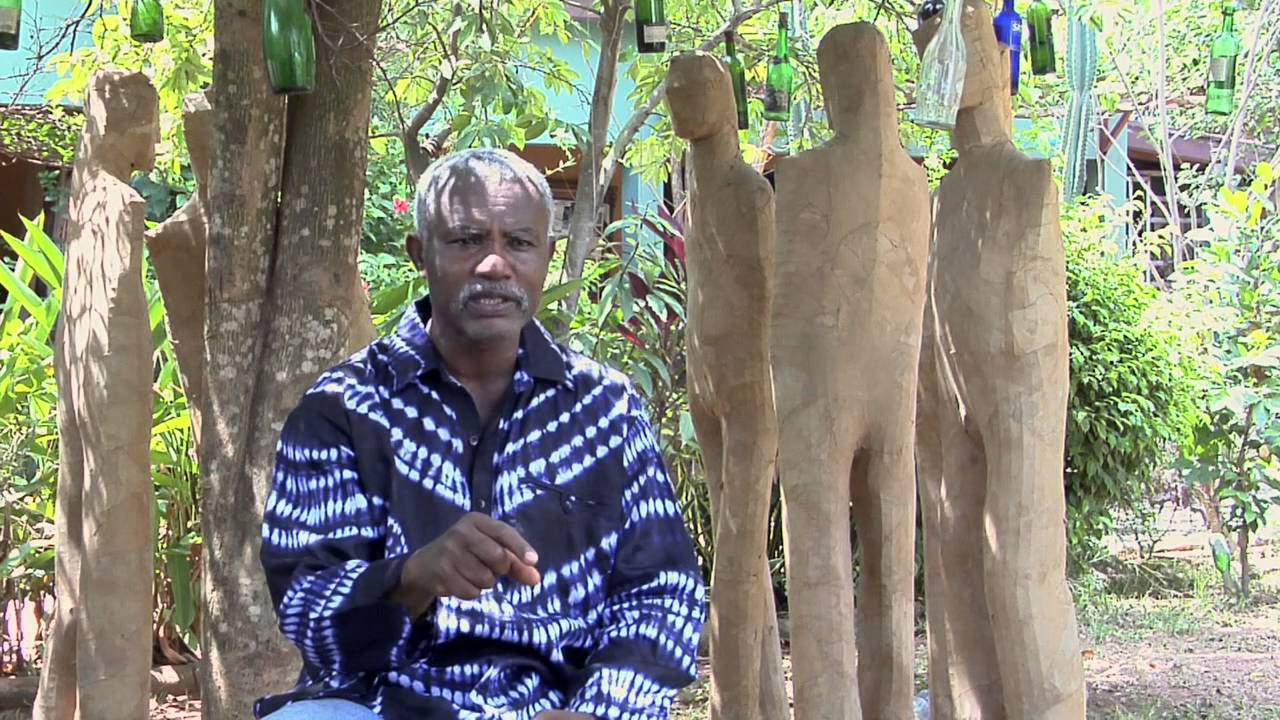For Kofi Setordji art is a therapy, a way of life and a method to express what he perceives while looking at life every day. But art is also his preferred means of communication. It is Kofi Setordji’s instrument to tell us what is in and on his mind. We can’t see what he thinks and he does not feel to be talented enough to express his thoughts as a writer in essays or poems. So he communicates with his audience through his artworks.
As he explains in his conversation with Safia Dickersbach, Kofi Setordji does not want to be put in a certain interpretational box. His job is just to work and create. Let others explain what he is doing. And this they have done. In a retrospective in 2012 Kofi Setordji was called one of the most outstanding contemporary Ghanaian artists of his generation with an abundance of expressions as varied as his eclectic style, having worked literally in every conceivable medium, genre and style, from photography through painting to his signature work as a sculptor having been exhibited in important museums and institutions in the U.S., South Africa, Germany, Italy, France, Austria, Switzerland and Denmark.
But still the main motivation of his artistic work is to communicate with his audience, to send a message across and to let people know what is on his mind. Although admitting to a radically subjective view of the world by stating that all his artistic expressions relate to the point where he is based and standing, where he is coming from geographically, culturally and philosophically, Kofi Setordji wants to speak to and reach his audience through his artwork.
During the creative process and in the production phase Kofi Setordji does not create art for anybody else but himself, at the same time he knows this is the only way in which he can be seen and heard and listened to in this world. As he describes it: “In the moment we human beings find out that life is a losing battle, we are traumatized and start to look for ways to deal with this realization. That’s the moment when some people start to climb mountains and try to reach the highest peaks on earth, looking to make a meaning to the life they are living.” Kofi Setordji found his kind of meaningfulness by looking for materials to create art works, by touching and testing materials every day, finding out how to connect them and create something out of them so that at one later point somebody passing by one of his artworks might say that Kofi Setordji was able to find this or that kind of material and translate it into a work of art which still communicates with its viewer long after Kofi Setordji himself is no longer around in this world.
Kofi Setordji, born in Accra in 1957, learned the craftsmanship, which he later utilized to reach the minds and conscience of his audience, during an education as a commercial painter and graphic artist. In his younger years he earned his living by working as a billboard painter, painting according to the instructions of his clients, before studying sculpture with famed Ghanaian artist Saka-Acquaye between 1984 and 1988. Nowadays as a fine art painter and sculptor he only works for himself pursuing his own artistic and creative endeavours.
Kofi Setordji’s perhaps best-known work is “Genocide,” a multi-dimensional installation that he created in memory of the countless anonymous victims of the genocide in Rwanda and as a monument reminding us of the ever-repeating circle of similar atrocities around the world.
Kofi Setordji works with different materials like wood, metal, bronze, stone, terracotta and paint to create sculptures and paintings commenting on historical, social and political issues.
A five metres high sculpture of Kofi Setordji which was commissioned by the city of Accra is now standing opposite the national theatre (“Entre Amies”). Other sculptures explore the “Brain Drain” from African countries interpreting it as a grass-roots revolt or they accuse corrupt politicians by showing them without hands, because they never touch the bribe money, but it reaches them by wire transfer.
Besides being a sculptor, painter and photographer, Kofi Setordji has become one of the foremost mentors of young artists in Ghana. In his ArtHAUS compound students from all over the world gather around the master. This is where discussions, arguments, work and laughter occur, as Prof. Gert Chesi noted. This dedication for the cultural development of Ghana’s still expanding art scene is complemented by Kofi Setordji’s work on the board of the Nubuke Foundation which promotes Ghanaian art, culture and heritage both at home and abroad.
Read about the project on “This Is Africa”: http://bit.ly/16ejiHb
Editing: David Picard
Camera: Enes Hakan Tokyay
Music (for the questions): Ayo Nelson-Homiah — “Express”
Photos of the paintings: Ben Bond
Music (for the credits): Sarkodie (feat. Kesse) — “Azonto Fiesta”
A film by Safia Dickersbach
FACEBOOK: https://www.facebook.com/pages/SHOWCASE/203245376412487
source

